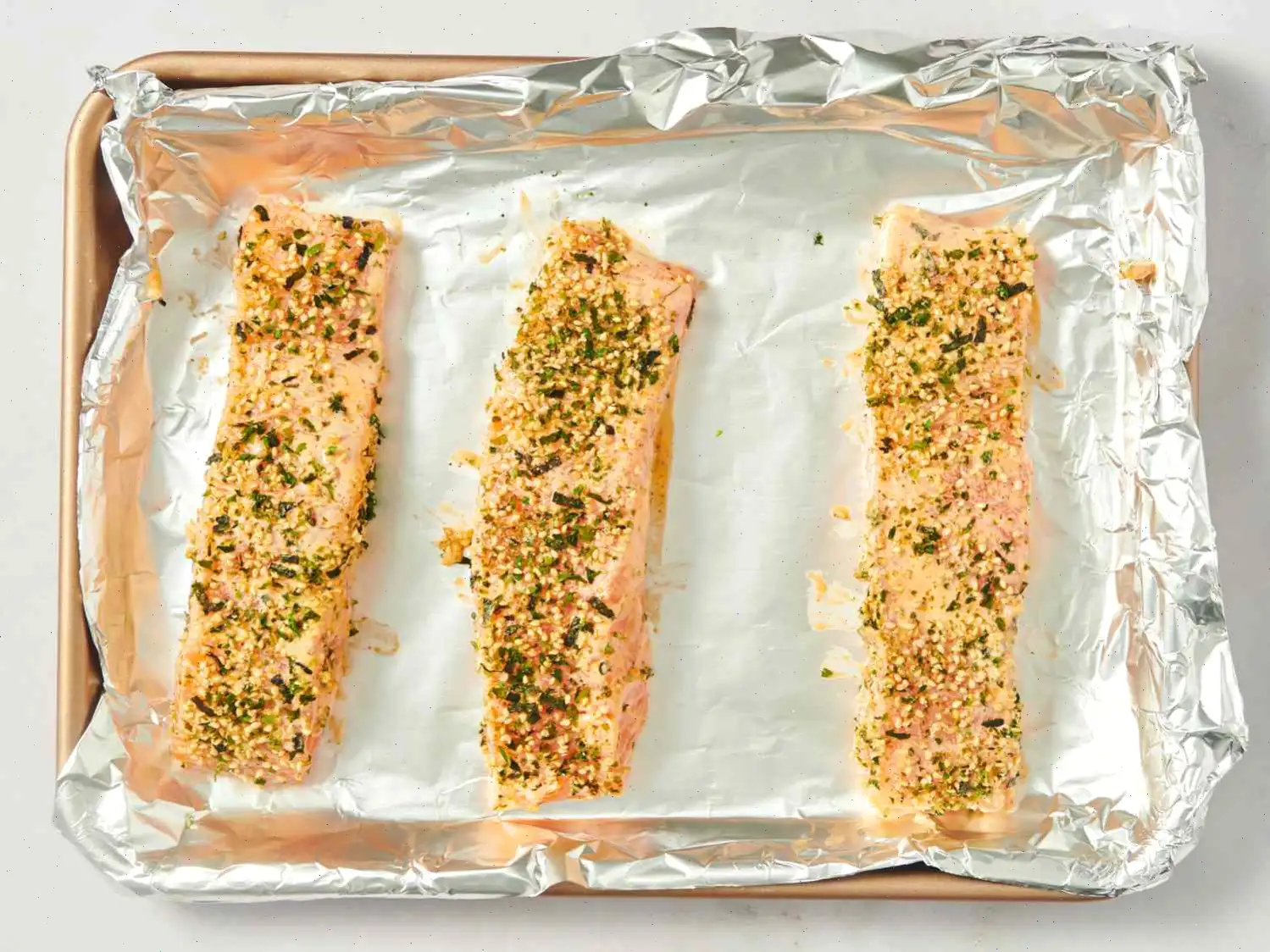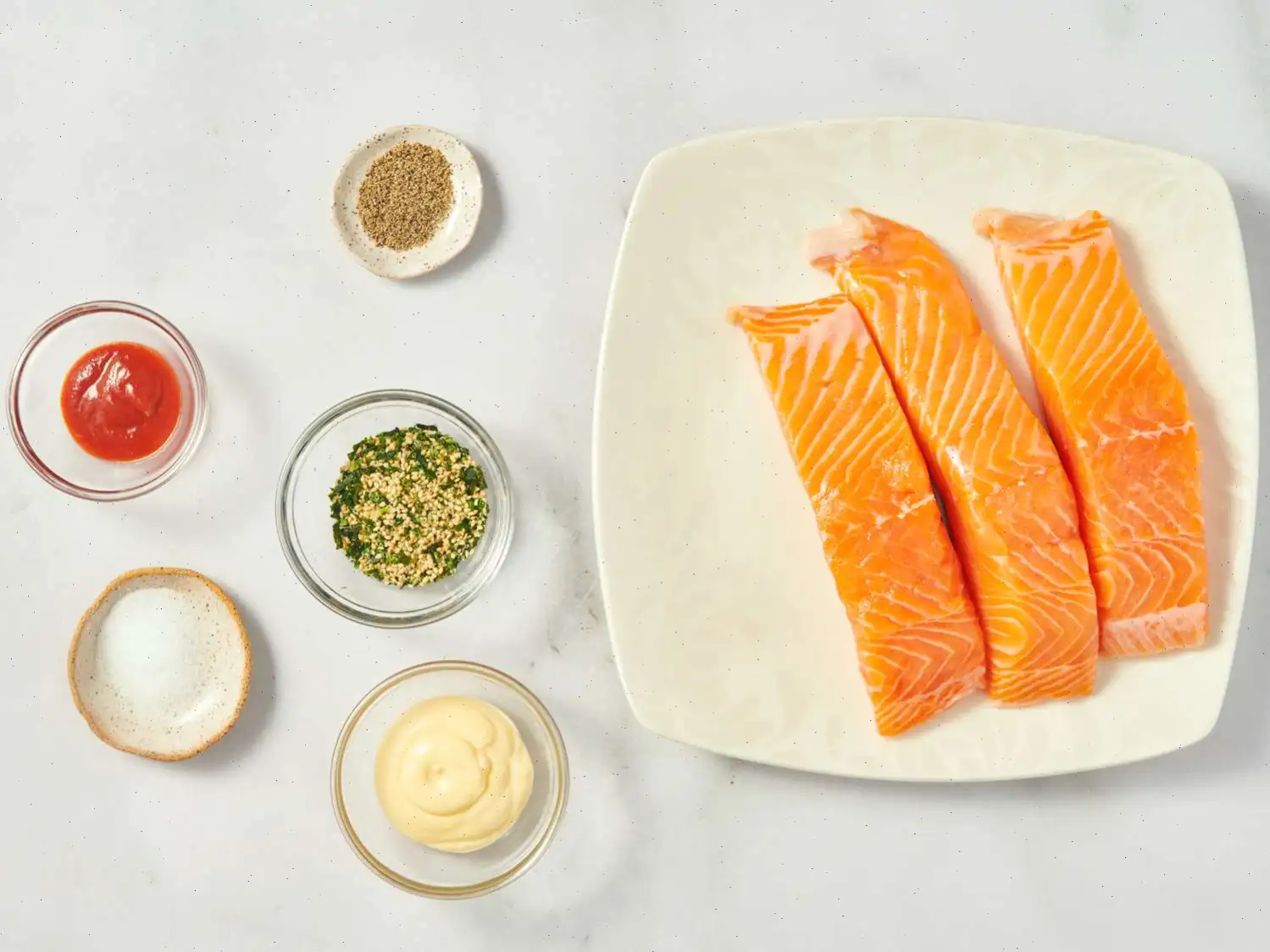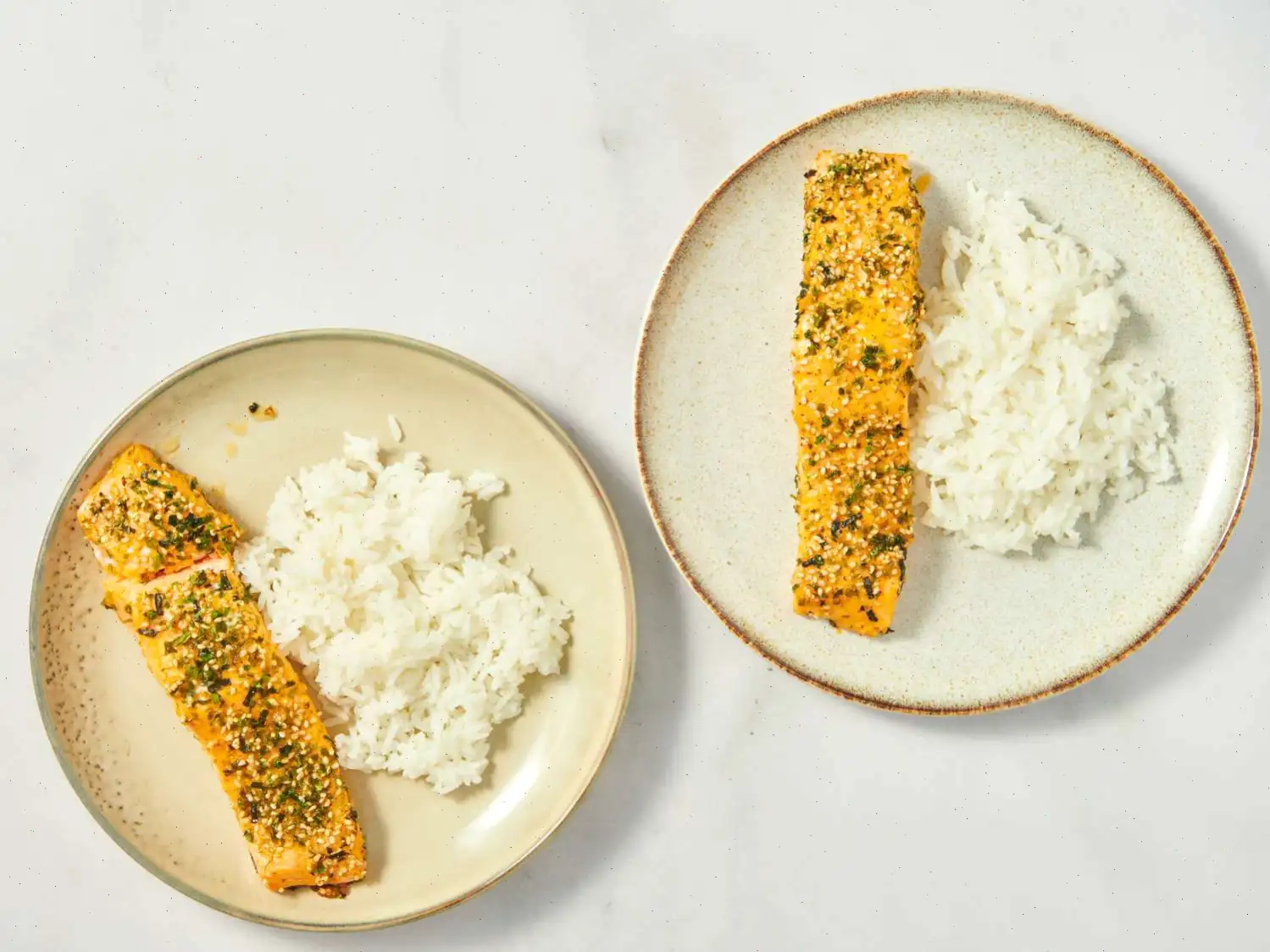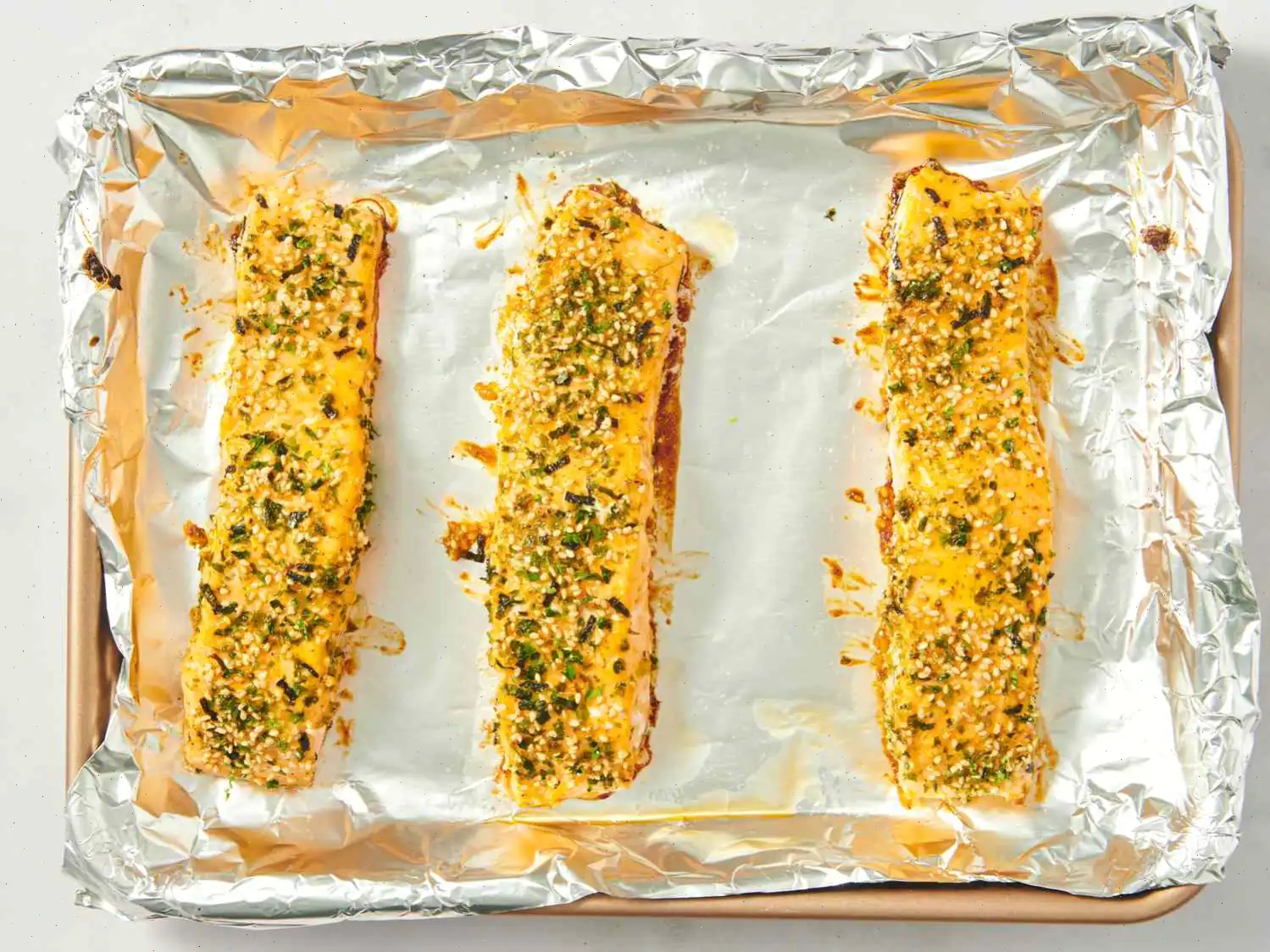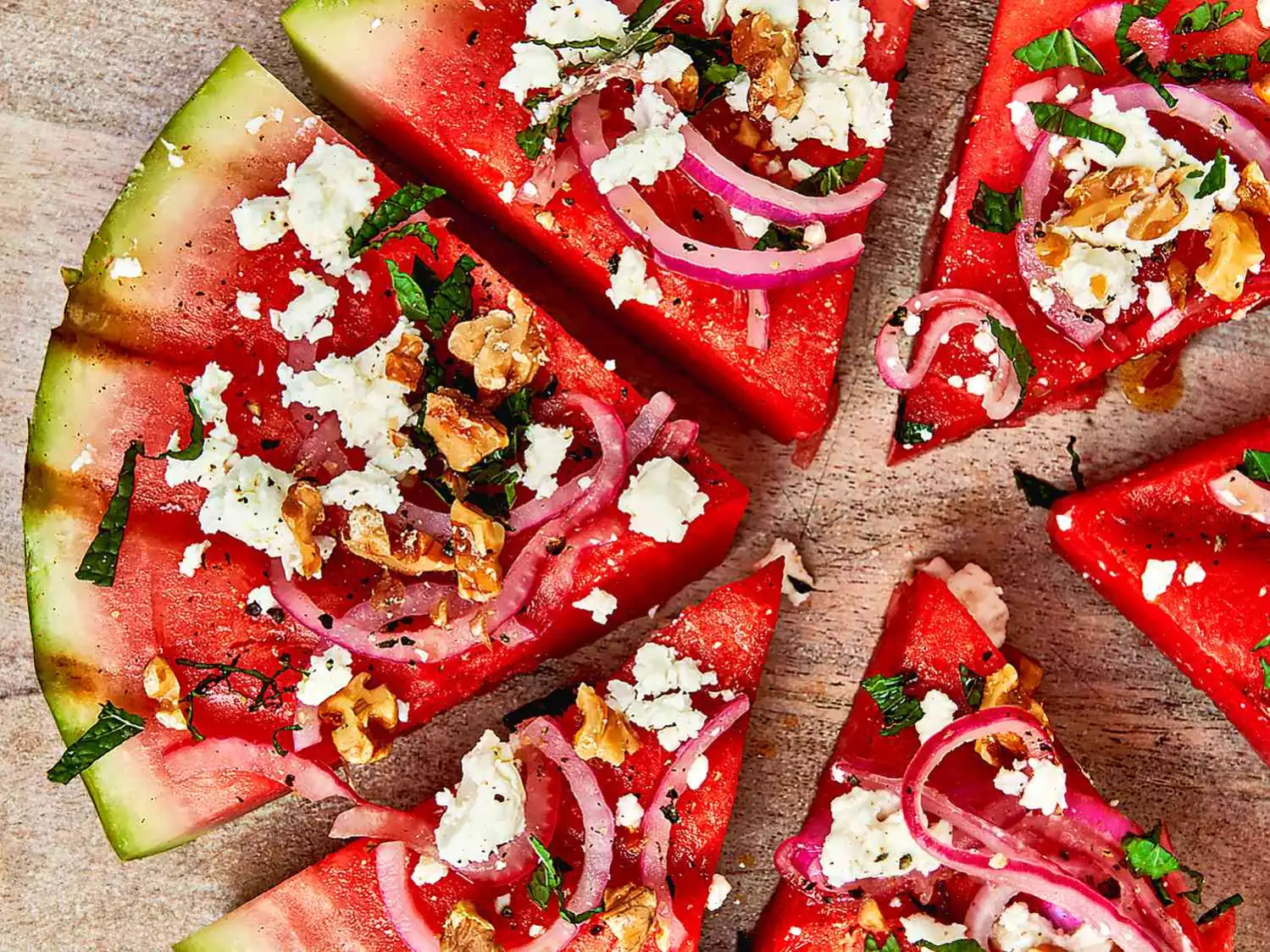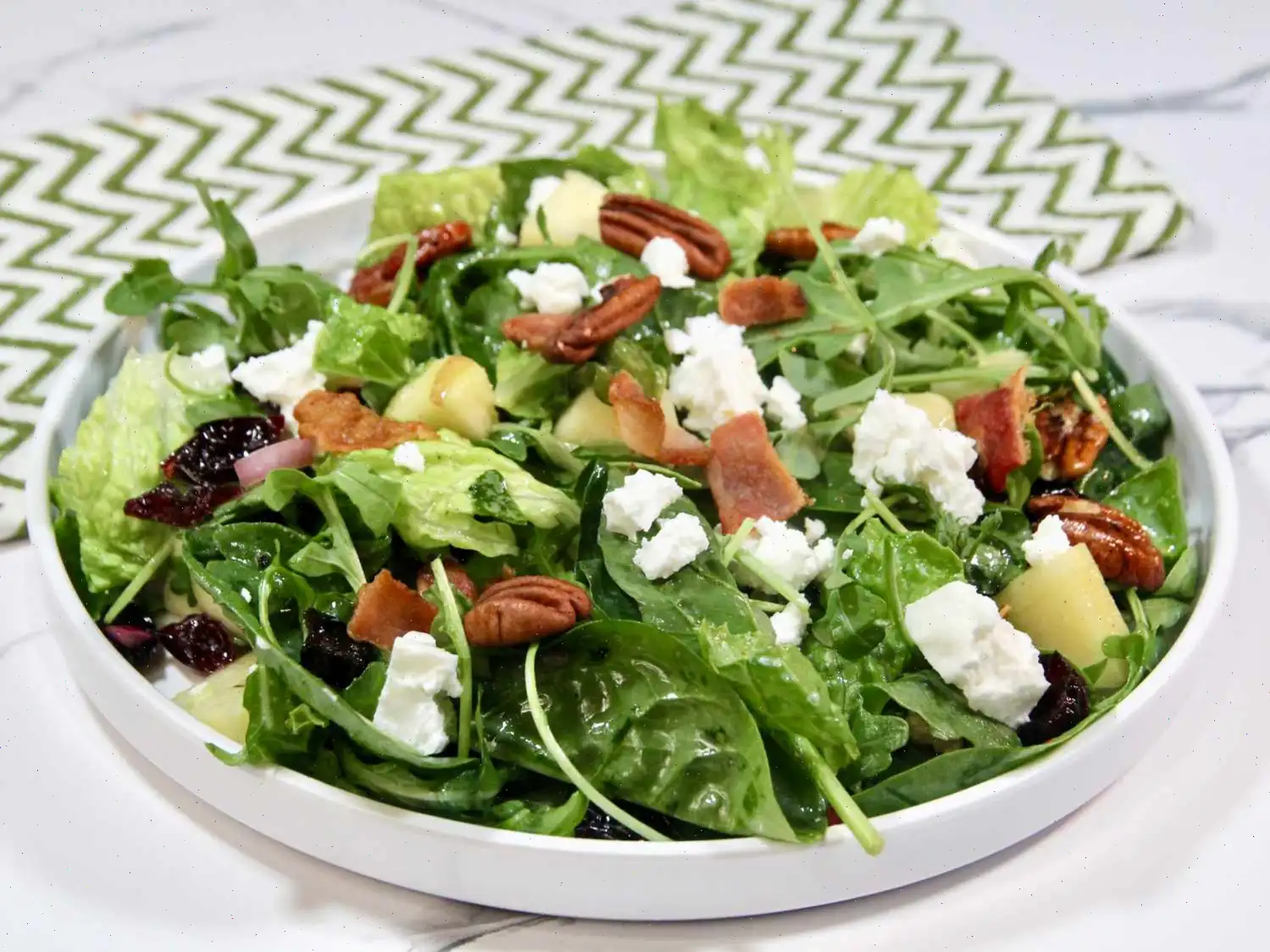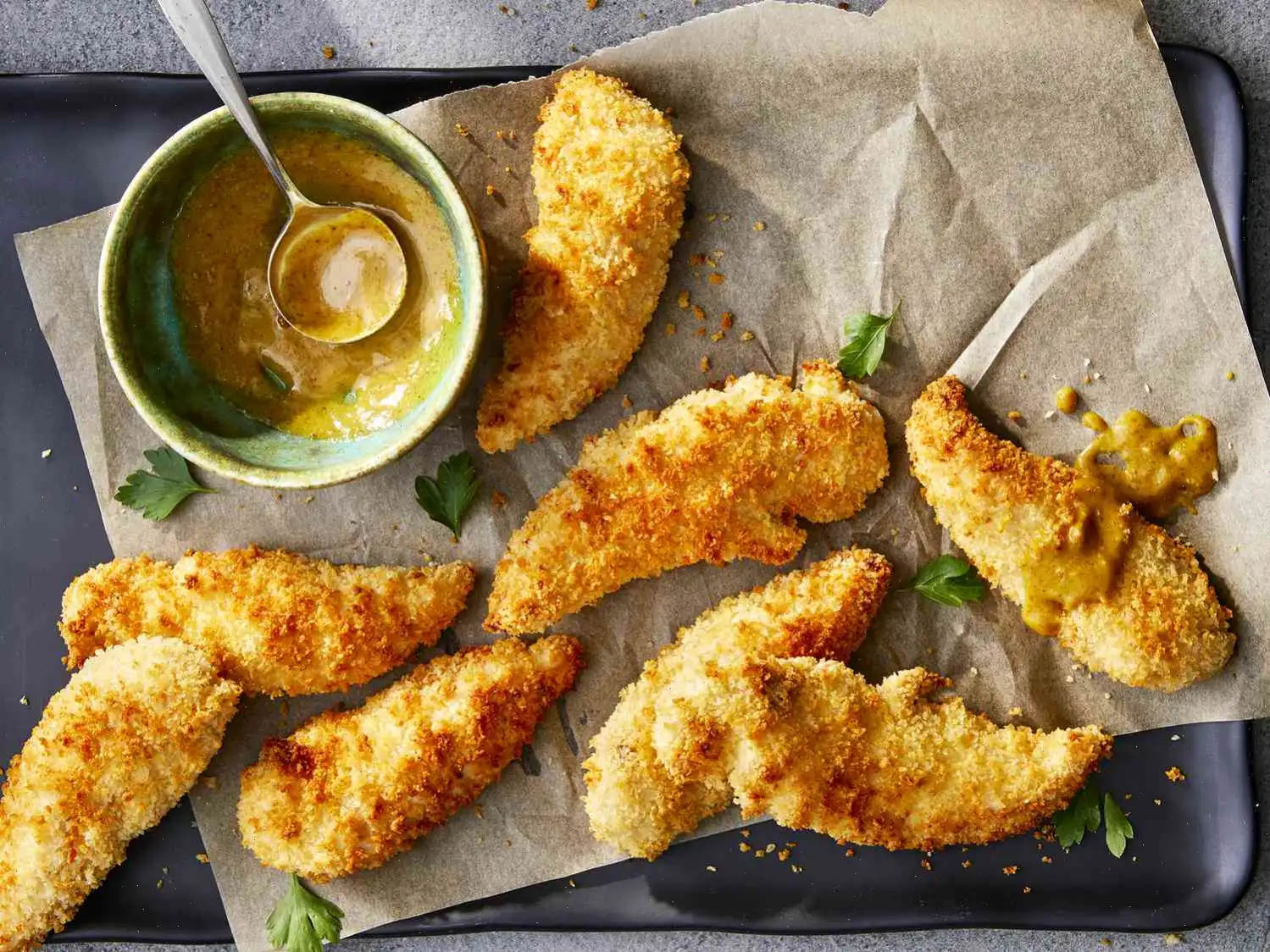
4-Ingredient Furikake Salmon Recipe
Ingredients
This recipe makes 4 servings. Ingredient amounts can be scaled, but cooking times remain the same.
- 1 pound salmon fillets
- Salt and freshly ground black pepper, to taste
- 2 tablespoons Kewpie mayonnaise
- 2 teaspoons Sriracha (adjust to your heat preference)
- 2 tablespoons furikake seasoning
Directions
- Gather all ingredients and preheat your oven to 375F (190C).
- Pat the salmon fillets dry with a paper towel. Lightly season with salt and freshly ground black pepper on both sides.
- In a small bowl, mix the Kewpie mayonnaise with Sriracha until fully combined.
- Brush the spicy mayo mixture generously over each salmon fillet.
- Sprinkle furikake seasoning evenly on top of the coated salmon.
- Place the salmon on a baking sheet and bake in the preheated oven for about 20 minutes, or until the fish flakes easily with a fork.
- Serve immediately while hot and enjoy the combination of savory, spicy, and umami flavors.
Nutrition Facts (per serving)
- Calories: 297
- Fat: 20g (26% DV)
- Saturated Fat: 4g (18% DV)
- Cholesterol: 74mg (25% DV)
- Sodium: 355mg (15% DV)
- Carbohydrates: 2g (1% DV)
- Dietary Fiber: 0g
- Sugars: 1g
- Protein: 26g (51% DV)
- Vitamin C: 5mg (6% DV)
- Calcium: 36mg (3% DV)
- Iron: 1mg (4% DV)
- Potassium: 460mg (10% DV)
*Percent Daily Values are based on a 2,000 calorie diet. Individual needs may vary.
**Nutrient information is estimated and may not account for all ingredients. Consult a healthcare professional for medically restrictive diets.

History of Origin
Furikake salmon is a modern dish inspired by the long-standing Japanese tradition of seasoning rice, vegetables, and fish with furikakea dry mix typically containing seaweed, sesame seeds, bonito flakes, salt, and sugar. While salmon has been enjoyed in Japan for centuries, the fusion of salmon with mayonnaise and furikake rose to popularity in the late 20th century, particularly in home kitchens and casual Japanese-American dining. The addition of Kewpie mayonnaise and Sriracha reflects contemporary culinary blending, creating a dish rooted in Japanese flavors yet influenced by global pantry staples.
Regional Variations
In Japan, furikake-topped seafood may be prepared with regional blends that differ in flavorsome include spicy chili flakes, others emphasize bonito or shiso. In Hawaii, where furikake is especially beloved, furikake salmon is often paired with rice, macaroni salad, or incorporated into bento-style meals. North American adaptations frequently add ingredients like sweet chili sauce or honey, creating a more pronounced sweetspicy glaze.
How It Differs from Similar Dishes
Unlike traditional Japanese grilled salmon (shiozake), which is seasoned simply with salt, furikake salmon uses a rich, creamy base of Kewpie mayonnaise combined with Sriracha to create a spicy umami crust. It also differs from teriyaki salmon, which relies on a sweet soy-based sauce; furikake salmon instead emphasizes crunchy texture, umami depth, and subtle heat. Compared to baked Western-style salmon dishes, this version incorporates distinctly Japanese pantry staples, giving it a fusion identity.
Where It Is Commonly Served
Furikake salmon is often served in Japanese-American and Hawaiian households, casual eateries, lunch counters, and bento shops. It is popular for weeknight dinners because of its quick preparation and minimal ingredients. In contemporary cafs and fusion restaurants, it may appear as part of rice bowls, poke-style plates, or meal-prep offerings.
Interesting Facts
Furikake was originally developed in Japan in the early 1900s as a nutritious seasoning to increase calcium intake.
Kewpie mayonnaise, used in this recipe, is made with only egg yolks and rice vinegar, giving it a smoother, richer flavor than traditional Western mayonnaise.
The combination of mayonnaise and Sriracha is widely known as spicy mayo, popularized by sushi restaurants before becoming a staple in home cooking.
Salmons naturally high fat content makes it ideal for high-heat baking with toppings, as it remains moist even under a crust of seasoning.
Furikake seasoning now comes in dozens of varietiesranging from wasabi and shiso to versions containing dried egg or kimchi flakesallowing for endless personalized variations of the dish.


